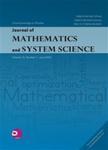Cyclical Elliptical Pedal Surfaces
Cyclical Elliptical Pedal Surfaces作者机构:Department of Aerodynamics and Simulation Technical University in Kosice Kosice 041 21 Slovak Republic
出 版 物:《Journal of Mathematics and System Science》 (数学和系统科学(英文版))
年 卷 期:2011年第1卷第1期
页 面:1-6页
学科分类:1305[艺术学-设计学(可授艺术学、工学学位)] 13[艺术学] 08[工学] 080203[工学-机械设计及理论] 081304[工学-建筑技术科学] 0802[工学-机械工程] 0813[工学-建筑学] 080201[工学-机械制造及其自动化]
主 题:Cyclical elliptical pedal surfaces creation classification Dupin's cyclides.
摘 要:Intensive use of geometrical modelling started with the development of computer graphics and CAD/CAM technologies, comprising a wide area of mathematical disciplines. Geometrical modelling is a synthesis of the geometry and computer graphics, which enable us to develop complex mathematical models that would be rather difficult to display without using a computer. The author recognizes two basic methods of research of geometrical models, synthetic and analytic. The synthetic method makes use of geometrical constructions and in the analytic method geometrical objects are characterized by numerical data. The author uses these methods in this contribution. The aim of this research is to show central cyclides (Dupin's cyclides) as a special kind of the cyclical elliptical pedal surfaces. Firstly, applying the method of synthetic geometry, a new class of such surfaces in the 3-dimensional Euclidean space (model of the projective space) is defined. The geometrical construction of these surfaces is dependent on the given ellipse and the position of the pole P. It is the point at which the pencil of perpendicular planes passes to the plane of the ellipse, wherein the generating circles of the surface are lying. The parametric equations of the cyclical elliptical surface are derived applying the method of analytic geometry. The author classifies the surfaces according to the number of generating circles with a zero radius. The evolute of the ellipse divides the plane of the ellipse into two areas, Ω1 and Ω2. The shape of the surface depends on the position of the pole P in the areas of Ω1 and Ω2. The surface can have 4, 3 or 2 circles with a zero radius. The author then describes the relationship between these surfaces and the Dupin's cyclides, obtained in the case when the pole P is the point on the major axis of the ellipse. Finally, the transformation of these surfaces is shown by changing of the orthonormal base in the parameterization of the generating circles of the sur



